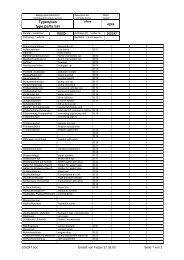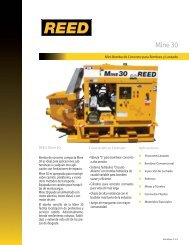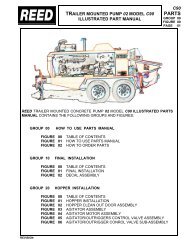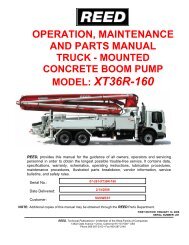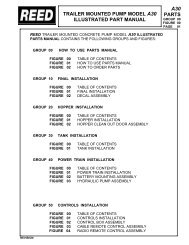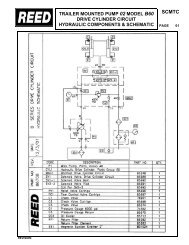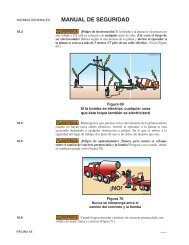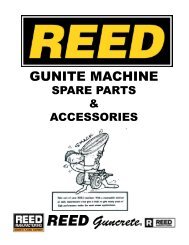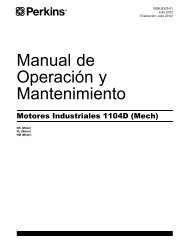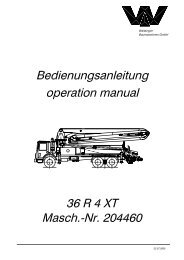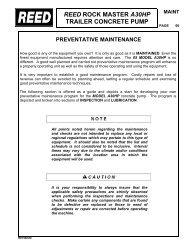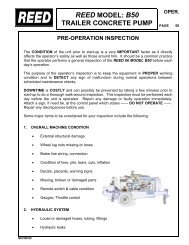Perkins Motor Operation and Maintenance Manual (English) - REED
Perkins Motor Operation and Maintenance Manual (English) - REED
Perkins Motor Operation and Maintenance Manual (English) - REED
Create successful ePaper yourself
Turn your PDF publications into a flip-book with our unique Google optimized e-Paper software.
76 SEBU8325-01<br />
<strong>Maintenance</strong> Section<br />
V-Belts - Inspect/Adjust/Replace<br />
For options regarding the removal, installation, <strong>and</strong><br />
replacement, consult your <strong>Perkins</strong> dealer or your<br />
<strong>Perkins</strong> distributor. Refer to the Disassembly <strong>and</strong><br />
Assembly <strong>Manual</strong>, “Turbocharger - Remove <strong>and</strong><br />
Turbocharger - Install” for further information.<br />
Inspecting<br />
NOTICE<br />
The compressor housing for the turbocharger must<br />
not be removed from the turbocharger for cleaning.<br />
The actuator linkage is connected to the compressor<br />
housing. If the actuator linkage is moved or disturbed<br />
the engine may not comply with emmissions legislation.<br />
V-Belts - Inspect/Adjust/<br />
Replace<br />
Inspection<br />
i02690446<br />
1. Remove the pipe from the turbocharger exhaust<br />
outlet <strong>and</strong> remove the air intake pipe to the<br />
turbocharger. Visually inspect the piping for the<br />
presence of oil. Clean the interior of the pipes<br />
in order to prevent dirt from entering during<br />
reassembly.<br />
2. Check for the presence of oil. If oil is leaking from<br />
the back side of the compressor wheel, there is a<br />
possibility of a failed turbocharger oil seal.<br />
The presence of oil may be the result of extended<br />
engine operation at low idle. The presence of oil<br />
mayalsobetheresultofarestrictionoftheline<br />
for the intake air (clogged air filters), which causes<br />
the turbocharger to slobber.<br />
3. Inspect the bore of the housing of the turbine<br />
outlet for corrosion.<br />
4. Fasten the air intake pipe <strong>and</strong> the exhaust outlet<br />
pipe to the turbocharger housing.<br />
Illustration 43<br />
Arrangement for the V-belts<br />
g01249073<br />
To maximize the engine performance, inspect the<br />
belts for wear <strong>and</strong> for cracking. Replace belts that are<br />
worn or damaged.<br />
For applications that require multiple drive belts,<br />
replace the belts in matched sets. Replacing only<br />
one belt of a matched set will cause the new belt to<br />
carry more load because the older belt is stretched.<br />
The additional load on the new belt could cause the<br />
new belt to break.<br />
If the belts are too loose, vibration causes<br />
unnecessary wear on the belts <strong>and</strong> pulleys. Loose<br />
belts may slip enough to cause overheating.<br />
To accurately check the belt tension, a suitable gauge<br />
should be used.



